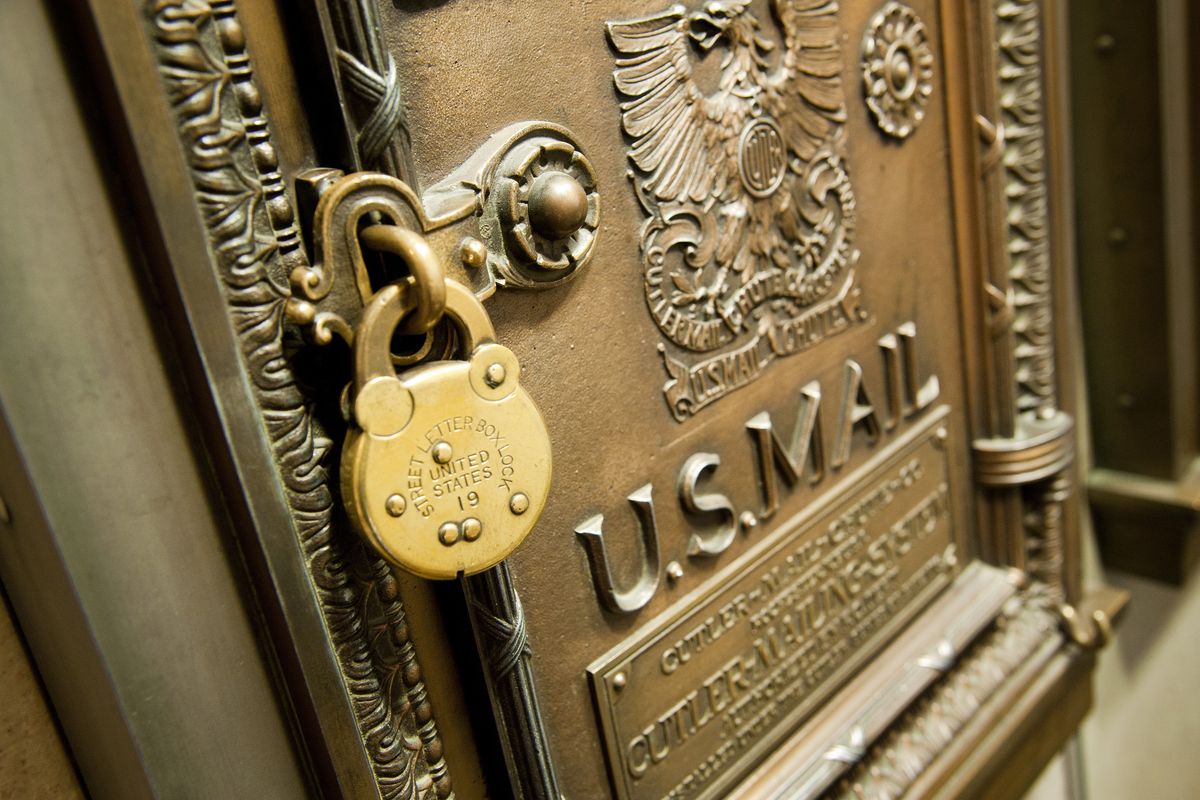First-class relics
Vintage mailboxes harken to a simpler – and much less expensive – era of delivery

The cost to mail a first-class letter increases by a penny Sunday, from 44 cents to 45 cents.
In the early 1900s, it cost 2 cents to mail a letter. Those days are gone forever, but some historic mailboxes are still in use.
Downtown Spokane boasts nearly a dozen, and more are scattered throughout the Inland Northwest in old buildings now used as banks, business complexes and government agencies.
• In the Davenport Hotel lobby, the mailbox has been in place since 1914, when the hotel was built. Look for the original Davenport insignia, three crosses and a shield, at the top of the mailbox. Mail is collected there at 1 p.m.
In the early 20th century, telegrams and long distance phone calls were prohibitively expensive. Letters were a bargain. The Davenport supplied paper and pens on desks in the lobby.
• At the Empire State Building, also known as the Great Western Building, at 901 W. Riverside Ave., letters glide down mail chutes from the floors above into the building’s historic mailbox, just as they have since the building was constructed in 1900.
Due to modern fire codes, and worries about people “mailing” flaming objects, mail chutes in most historic buildings have been sealed shut, even if they have lobby-level historic mailboxes still in use.
Step into the Empire State Building, with its flying letters, and you step back into an era truly near its end.
• The ancient mailboxes in the lobbies of two Riverside Avenue buildings, the Paulsen and the Sherwood, look similar to each other. They were manufactured by the Microsoft of its time, the Cutler Mail Chute Co.
The Rochester, N.Y., company had a monopoly on “receiving boxes,” so named because they received letters via mail chutes in multi-story buildings.
Between 1884 and 1904, Cutler sold 1,600 receiving boxes and connecting chutes throughout the country.
The specifications were exact, according to a National Postal Museum history. Made of metal, the bottom of the mailbox was required to have a cushion to “prevent injury to the mail.”
In this era of smartphones, Twitter and Facebook – technologies that change almost daily – these ancient mailboxes remain solid, stable and open for business.
Starting Sunday, they will provide an injury-free environment for our 45-cent letters, just as they did for the 2-cent letters a century ago.